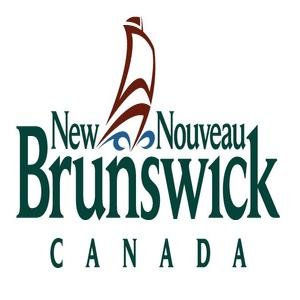resources
Type of resources
Topics
Keywords
Contact for the resource
Provided by
Years
Formats
Representation types
Update frequencies
status
Service types
-

The allocation of public land consists in defining the government's guidelines for the use and protection of public territory. PATPs make it possible to guide the interventions of the various actors in the field by providing them with the necessary bases for integrated management of land and resources in the State domain. This strategic approach thus contributes to the harmonious and sustainable development of public land, while reducing conflicts of use. **This third party metadata element was translated using an automated translation tool (Amazon Translate).**
-
ENV - Environment and conservation (environment)Environmental resources, protection, and conservation. For example, resources describing pollution, waste storage and treatment, environmental impact assessment, environmental risk, and nature reserves. The conservation data is current as of October 2013. The air quality and water quality data is of unknown date and accuracy. No updates in this dataset have been made since that time. The air quality and water quality data is of unknown date and accuracy. We are making all efforts to update conservation, protect areas and parks as soon as possible.
-

Provides the locations of known farms within the Province of New Brunswick.
-
GEO - Geological and geophysical (geoscientificInformation)The earth sciences. For example, resources describing geophysical features and processes; minerals; the composition, structure, and origin of the earths rocks; earthquakes; volcanic activity; landslides; gravity information; soils; permafrost; hydrogeology; and erosion
-

[ARCHIVED] The requirement for non-commercial burn permits has been discontinued.
-

Forest resource roads (FRR) are actively used for accessing forest resources. FRRs are tracked and managed in a road management database. These roads do not represent a complete road network, they should be viewed in conjunction with the Roads -50k - Canvec dataset. Many FRRs are gated with controlled access. There are four categories of roads in the dataset: Forest Resource Roads (act); Forest Resource Access (non-act), Public Access (non-act) and auxiliary roads: - Forest resources road (Act): a road constructed, modified or maintained for the purpose of providing access for forest resources harvesting or management of forest resources that is authorized under subsection 32(1) of the Act, or a road designated as forest resources road under section 73 of the Regulation. These roads were constructed or designated after the Forest Resources Act and Regulation were enacted. - Forest resource access (non-Act): a road constructed, modified or maintained for the purpose of providing access for forest resources harvesting or management of forest resources that is considered a capital investment by the Government of Yukon, Department of Energy, Mines and Resources, Forest Management Branch. These roads were constructed prior to the enactment of the Forest Resources Act. - Public Access (non act): a pre-existing public road. In this road network all Public Access is part of the forest resource access network. - Auxiliary access: a variety of access types that do not conform to the above descriptions and may include: research forest trails, skid trails, heritage trails, trails that access forest resources. Distributed from [GeoYukon](https://yukon.ca/geoyukon) by the [Government of Yukon](https://yukon.ca/maps) . Discover more digital map data and interactive maps from Yukon's digital map data collection. For more information: [geomatics.help@yukon.ca](mailto:geomatics.help@yukon.ca)
-

EMR Natural Resource Subdistricts Distributed from [GeoYukon](https://yukon.ca/geoyukon) by the [Government of Yukon](https://yukon.ca/maps) . Discover more digital map data and interactive maps from Yukon's digital map data collection. For more information: [geomatics.help@yukon.ca](mailto:geomatics.help@yukon.ca)
-

The Yukon Geological Survey (YGS) has compiled over 195 surficial geology maps into a standardized GIS format, providing approximately 80% coverage of the territory. The maps range in scales from 1:250,000 to 1:10,000 with spatial overlap between scales. The original maps were produced by various agencies, including the Geological Survey of Canada, YGS, Yukon Government, universities, and the City of Whitehorse. All original feature descriptions have been preserved and also converted to standardized values using the Yukon terrain classification system. The compilation includes 4 GIS datasets and supporting documents available for download via [YGS integrated data system](https://data.geology.gov.yk.ca/Compilation/33) (YGSIDS) or GeoYukon. A .lyr file is [provided](https://data.geology.gov.yk.ca/Compilation/33) to symbolize feature classes and differentiate overlapping maps at different scales. Additionally, there is a surficial geology map index. The polygon attributes captured include surficial material, texture, age, surface expression, and geomorphological processes. Line features include geological contacts, glacial limits, glacial landforms (cirques, arêtes, eskers, meltwater channels, moraines), and non-glacial landforms (faults, lineaments, landslides, escarpments). Point features include field station, fossil and sample locations, glacial landforms (erratics, kames, kettles, drumlins, flutings), permafrost features (pingos, palsas, patterned ground, thermokarst depressions), and other non-glacial landforms (landslides, tors). The map index provides information on each map publication such as author, map title, map scale, publisher. These data are valuable for land-use applications in the territory, including: mineral and placer exploration, geotechnical engineering, infrastructure planning, granular resource assessments, permafrost modeling, agricultural assessments, forest management, and biophysical or ecological land classification. Distributed from [GeoYukon](https://yukon.ca/geoyukon) by the [Government of Yukon](https://yukon.ca/maps) . Discover more digital map data and interactive maps from Yukon's digital map data collection. For more information: [geomatics.help@yukon.ca](mailto:geomatics.help@yukon.ca)
-

The Yukon Geological Survey (YGS) has compiled over 195 surficial geology maps into a standardized GIS format, providing approximately 80% coverage of the territory. The maps range in scales from 1:250,000 to 1:10,000 with spatial overlap between scales. The original maps were produced by various agencies, including the Geological Survey of Canada, YGS, Yukon Government, universities, and the City of Whitehorse. All original feature descriptions have been preserved and also converted to standardized values using the Yukon terrain classification system. The compilation includes 4 GIS datasets and supporting documents available for download via [YGS integrated data system](https://data.geology.gov.yk.ca/Compilation/33) (YGSIDS) or GeoYukon. A .lyr file is [provided](https://data.geology.gov.yk.ca/Compilation/33) to symbolize feature classes and differentiate overlapping maps at different scales. Additionally, there is a surficial geology map index. The polygon attributes captured include surficial material, texture, age, surface expression, and geomorphological processes. Line features include geological contacts, glacial limits, glacial landforms (cirques, arêtes, eskers, meltwater channels, moraines), and non-glacial landforms (faults, lineaments, landslides, escarpments). Point features include field station, fossil and sample locations, glacial landforms (erratics, kames, kettles, drumlins, flutings), permafrost features (pingos, palsas, patterned ground, thermokarst depressions), and other non-glacial landforms (landslides, tors). The map index provides information on each map publication such as author, map title, map scale, publisher. These data are valuable for land-use applications in the territory, including: mineral and placer exploration, geotechnical engineering, infrastructure planning, granular resource assessments, permafrost modeling, agricultural assessments, forest management, and biophysical or ecological land classification. Distributed from [GeoYukon](https://yukon.ca/geoyukon) by the [Government of Yukon](https://yukon.ca/maps) . Discover more digital map data and interactive maps from Yukon's digital map data collection. For more information: [geomatics.help@yukon.ca](mailto:geomatics.help@yukon.ca)
-

EMR Natural Resource Districts Distributed from [GeoYukon](https://yukon.ca/geoyukon) by the [Government of Yukon](https://yukon.ca/maps) . Discover more digital map data and interactive maps from Yukon's digital map data collection. For more information: [geomatics.help@yukon.ca](mailto:geomatics.help@yukon.ca)
 Arctic SDI catalogue
Arctic SDI catalogue